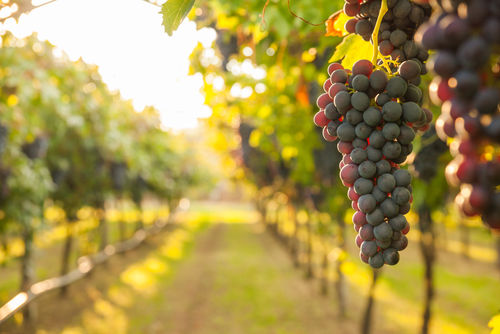The value of wine lies in the attention paid to it by all the people involved: from the producer to the buyer, the seller, the oenologist, the sommelier etc. Thus, each attribute characterizes it: the geography with the notion of terroir, as well as the temporality with the notion of vintage. This specific interest in the vintage is largely explained by the role that climatic conditions play on the quantity and quality of the grapes produced and the wine that is made from them (BOIS, 2012).
Thus, wine is particularly sensitive to climate change. For example, “During the cold period of 1970-1980, the harvest in Côte de Beaune frequently began in early October. Today, it is around September 13 that the harvest begins on average. In 2003, the harvest started on August 19th, due to a particularly hot year – but especially a hot month of August. This is the earliest date for the beginning of the harvest ever observed in Burgundy since the 14th century” (BOIS, 2012). In the pursuit of quality-oriented wine production, this close relationship between the climate and the vine has constantly led winegrowers to adjust their activities (NEETHLING, 2016).
This rise in temperature also leads to the production of sweeter grapes, thus increasing the grapes, thus increasing the potential alcohol content of the wines. Also, it is the cause of the evolution of the geography of vine diseases, with a greater occurrence of powdery mildew in several northern vineyards. We observe the appearance, in these same vineyards, of insects such as Eudemis (Lobesia botrana), a lepidopteran pest of Mediterranean vineyards, or Scaphoideus titanus, a leafhopper vector of Flavescence dorée phytoplasma, a quarantine disease that has only recently appeared in Burgundy (BOIS, 2012).
Several responses are possible in the wine industry to face climate change. Among them, the modification of the world map of vineyards in response to atmospheric changes: vines migrate in altitude and latitude, leaving behind regions of wine culture that are sometimes thousands of years old. The abandonment of current wine-growing areas due to unprecedented climatic conditions would have dramatic consequences for the economy of regions with a large area planted with vines and/or for which production and related activities (trading, wine-making, etc.) constitute a major resource (NEETHLING, 2016). Another solution could be the gradual modification of the grape variety is an interesting option for regions in which the image of the wines is not attached to a particular product. These are vineyards producing varietal wines, for which the target consumer attaches greater importance to the organoleptic characteristics of a variety rather than the terroir. For example, in response to a severe drought, Syrah could be replaced by Grenache, which is less sensitive to water shortages. Also, genetic diversity within the same grape variety would make it possible to modify the harvest date, as would the development of rootstocks resistant to high heat (BOIS, 2012).
REFERENCES :
BOIS, B. (2012). Impacts of climate change on vineyards and proposed remedies. Meteorology, 38, 45-56.
NEETHLING. E. (2016). Adapting viticulture to climate change: towards high resolution strategies. Geography. Université Rennes 2.

